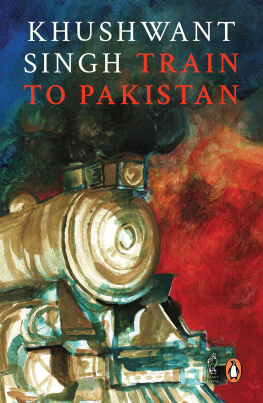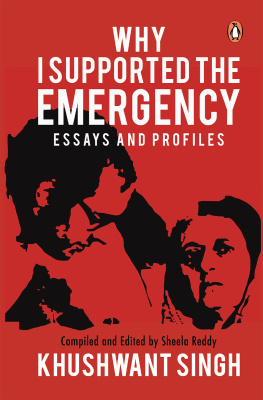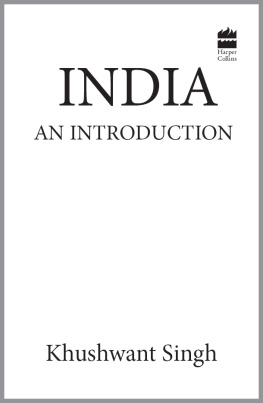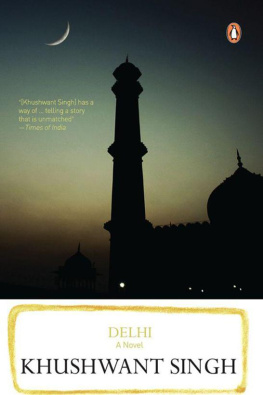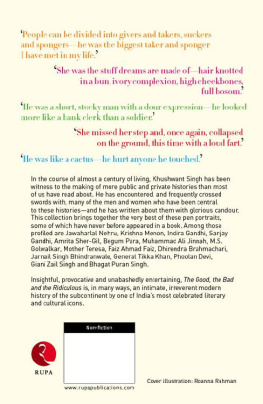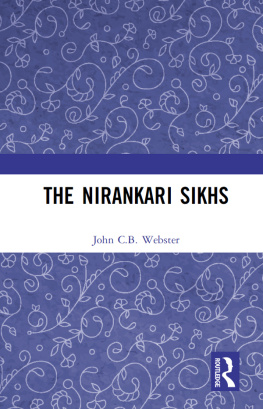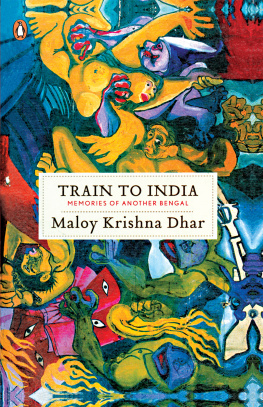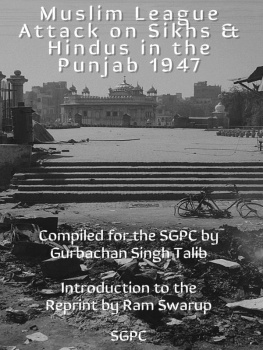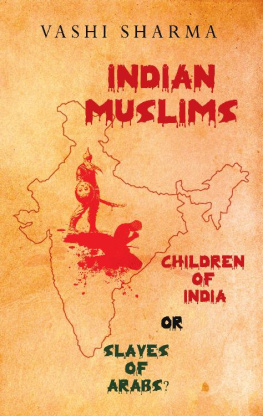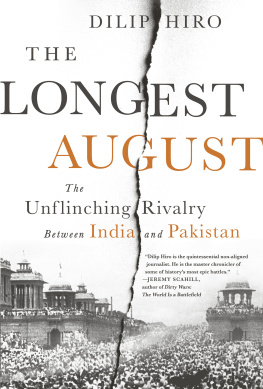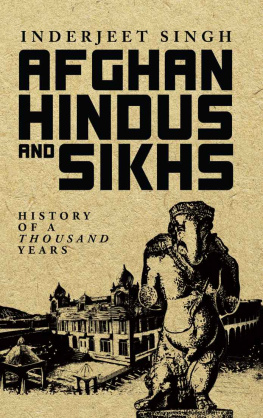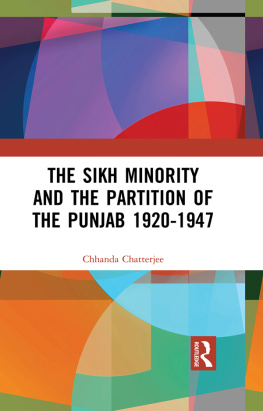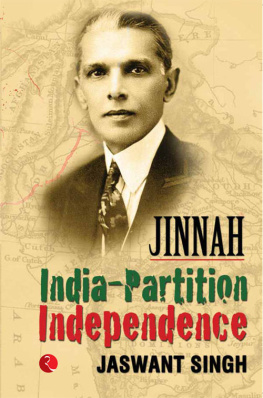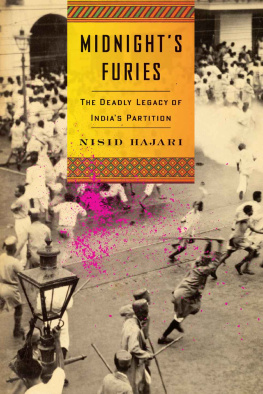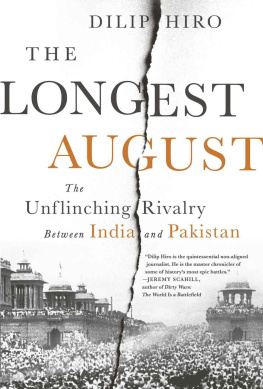Khushwant Singh was Indias best-known writer and columnist. He was founder-editor of Yojana and editor of the Illustrated Weekly of India, the National Herald and Hindustan Times. He authored classics such as Train to Pakistan, I Shall Not Hear the Nightingale (retitled as The Lost Victory) and Delhi. His last novel, The Sunset Club, written when he was ninety-five, was published by Penguin Books in 2010. His non-fiction includes the classic two-volume A History of the Sikhs, a number of translations and works on Sikh religion and culture, Delhi, nature, current affairs and Urdu poetry. His autobiography, Truth, Love and a Little Malice, was published by Penguin Books in 2002.
Khushwant Singh was a member of Parliament from 1980 to 1986. He was awarded the Padma Bhushan in 1974 but returned the decoration in 1984 in protest against the storming of the Golden Temple in Amritsar by the Indian Army. In 2007, he was awarded the Padma Vibhushan.
Among the other awards he received were the Punjab Ratan, the Sulabh International award for the most honest Indian of the year, and honorary doctorates from several universities.
Khushwant Singh passed away in 2014 at the age of ninety-nine.
Praise for the Book
He is a phenomenon as a novelistTimes of India
A searing book on the partition of the subcontinentGuardian
An enduring classicTelegraph
Rare is the novel that can transport you to a certain time in history and make you feel the protagonists emotions like your own. With Train to Pakistan, Singh created a portal that will, for generations to come, provide people a gateway to one of the most momentous and appalling episodes of Indian historyMail Today
The opening para is terse and implacable in its summing up of the horrors of Partition. An unsentimental portrait of a village imploding with hatreda microcosm of the larger conflagration of PartitionIndian Express Eye
Reveals Khushwant Singhs formidable powers of description and at another level the intensity of his feeling for rural rootsAsian Age
SeminalTribune
There is scarcely a false note through the book. There is great art here as well as sincerity and a vitality that springs from the soil of PunjabDeccan Herald
A powerful and affecting novel capturing both the sweep of the cataclysmic events of 1947 and the intimate details of village existenceNewsday
For my daughter Mala
Dacoity
The summer of 1947 was not like other Indian summers. Even the weather had a different feel in India that year. It was hotter than usual, and drier and dustier. And the summer was longer. No one could remember when the monsoon had been so late. For weeks, the sparse clouds cast only shadows. There was no rain. People began to say that God was punishing them for their sins.
Some of them had good reason to feel that they had sinned. The summer before, communal riots, precipitated by reports of the proposed division of the country into a Hindu India and a Muslim Pakistan, had broken out in Calcutta, and within a few months the death toll had mounted to several thousand. Muslims said the Hindus had planned and started the killing. According to the Hindus, the Muslims were to blame. The fact is, both sides killed. Both shot and stabbed and speared and clubbed. Both tortured. Both raped. From Calcutta, the riots spread north and east and west: to Noakhali in East Bengal, where Muslims massacred Hindus; to Bihar, where Hindus massacred Muslims. Mullahs roamed the Punjab and the Frontier Province with boxes of human skulls said to be those of Muslims killed in Bihar. Hundreds of thousands of Hindus and Sikhs who had lived for centuries on the Northwest Frontier abandoned their homes and fled towards the protection of the predominantly Sikh and Hindu communities in the east. They travelled on foot, in bullock carts, crammed into lorries, clinging to the sides and roofs of trains. Along the wayat fords, at crossroads, at railroad stationsthey collided with panicky swarms of Muslims fleeing to safety in the west. The riots had become a rout. By the summer of 1947, when the creation of the new state of Pakistan was formally announced, ten million peopleMuslims and Hindus and Sikhswere in flight. By the time the monsoon broke, almost a million of them were dead, and all of northern India was in arms, in terror, or in hiding. The only remaining oases of peace were a scatter of little villages lost in the remote reaches of the frontier. One of these villages was Mano Majra.
Mano Majra is a tiny place. It has only three brick buildings, one of which is the home of the moneylender Lala Ram Lal. The other two are the Sikh temple and the mosque. The three brick buildings enclose a triangular common with a large peepul tree in the middle. The rest of the village is a cluster of flat-roofed mud huts and low-walled courtyards, which front on narrow lanes that radiate from the centre. Soon the lanes dwindle into footpaths and get lost in the surrounding fields. At the western end of the village there is a pond ringed round by keekar trees. There are only about seventy families in Mano Majra, and Lala Ram Lals is the only Hindu family. The others are Sikhs or Muslims, about equal in number. The Sikhs own all the land around the village; the Muslims are tenants and share the tilling with the owners. There are a few families of sweepers whose religion is uncertain. The Muslims claim them as their own, yet when American missionaries visit Mano Majra the sweepers wear khaki sola topees and join their womenfolk in singing hymns to the accompaniment of a harmonium. Sometimes they visit the Sikh temple, too. But there is one object that all Mano Majranseven Lala Ram Lalvenerate. This is a three-foot slab of sandstone that stands upright under a keekar tree beside the pond. It is the local deity, the deo to which all the villagersHindu, Sikh, Muslim or pseudo-Christianrepair secretly whenever they are in a special need of blessing.
Although Mano Majra is said to be on the banks of the Sutlej River, it is actually half a mile away from it. In India villages cannot afford to be too close to the banks of rivers. Rivers change their moods with the seasons and alter their courses without warning. The Sutlej is the largest river in the Punjab. After the monsoon its waters rise and spread across its vast sandy bed, lapping high up the mud embankments on either side. It becomes an expanse of muddy turbulence more than a mile in breadth. When the flood subsides, the river breaks up into a thousand shallow streams that wind sluggishly between little marshy islands. About a mile north of Mano Majra the Sutlej is spanned by a railroad bridge. It is a magnificent bridgeits eighteen enormous spans sweep like waves from one pier to another, and at each end of it there is a stone embankment to buttress the railway line. On the eastern end the embankment extends all the way to the village railroad station.

